10 Small Business SEO Tips to Earn New Customers
As a small business owner, chances are you’ve already heard of search engine optimization (SEO). Regardless of your business’s size, it’s an incredibly important digital marketing technique. […]
As a small business owner, chances are you’ve already heard of search engine optimization (SEO). Regardless of your business’s size, it’s an incredibly important digital marketing technique. Knowing the importance of digital marketing is one thing, but actually having time to execute a comprehensive small business SEO strategy for your business is another.
As a small business owner, you likely dedicate a lot of time to your company. You may not have a lot of time to spend on your SEO strategy. This is why it’s important to focus your SEO efforts on the tactics that can bring you the biggest bang for your buck. These small business SEO tips will help you earn new customers through organic search.
First Off, What is SEO?

Simply put, SEO is the way of boosting your business’s online visibility by ranking in the search engine result pages (also known as the SERPs). Search engines are complex machines and they run on algorithms. These algorithms dictate how websites are read, categorized, and presented to the consumer based on their relevance to the user’s search query.
Google rankings change frequently, meaning your business can get to the top of the SERPs if you’re willing to do the work! However, search engines don’t release the ins and outs of their algorithms. This can make it tricky to know exactly why one web page ranks higher than another for a specific query. But don’t fret, this is where SEO best practices come in to play.
These tried and true digital marketing techniques have proven to bring the best results to small businesses like yours.
1. Develop a Consistent Small Business Content Strategy

The words content strategy may seem overwhelming to the business owner that is just starting out. But in reality, making a content strategy is much simpler than you may think. All you have to do is ask yourself the question: “What problems can I solve for my prospective customers and my target audience?”
To answer this question, you’ll need to think both creatively and practically. You’ll need to think about what your local customers need to know about your business. Also ask yourself how you are going to present that useful information.
When you do this, you’ll want to target consumers of all kinds. This includes brand new consumers figuring out who you are as a business to the existing consumers returning to your small business website.
Content Marketing = Small Business SEO Success
For some great examples of content marketing materials created by small businesses, read this article. There are so many different ways that small business owners can bring value to their potential customers. Also, content marketing materials easily rank in search engine results!
Some different content marketing materials that you could publish on your website, even with a small team include the following:
- Blog Posts
- Ebooks
- Infographics
- Gift Guides
- Glossaries
- Interviews
- Product or Tutorial Videos
- And more!
One of the greatest parts about SEO content is that it is one of the best ways to get creative with your brand awareness and authority. You know your customers the best, so feel free to get creative and develop both fun and informational ways of presenting great content.
The more information you produce means more landing pages on your website. This gives your website a better chance of showing up in multiple different Google search results. Not only do you want to provide relevant, up-to-date information to your customers, Google likes to see that you are consistently adding new content and information to your website
2. Optimize Your Meta Tags Properly
When you think about your content strategy, don’t forget to include the existing web pages on your site! Chances are, there are a good amount of usable web pages that just need to be optimized according to SEO best practices.

To ensure your page optimization is consistent across your entire website, you’ll need to focus on the following:
- Title tags. The goal of the title tag is to let both the search engine and the consumer know exactly what the page is about. Also known as a meta tag, all title tags should be formatted the same, at the top of page, like this: <head><title>Example Title</title></head>, and be no longer than 60 characters. They should also include the target keyword, or a similar term, that you want the page to rank for.
- Meta descriptions. Meta descriptions are summaries of what the web page is all about. They are displayed below the page title in your SERP result. The meta description should tell Google and the user the subject of the content. Meta descriptions should be short, sweet, and to the point, include a target keyword. Make sure it is no more than 160 characters long.
- Heading tags. These are the visible page headlines on the web page. They give your content structure, and they are characterized by an HTML codes from H1 tag to H6 tags. Heading tags are easy ways to incorporate relevant keywords. They break up the content of the page into easily digestible chunks.
The best part about making these changes is that they don’t take a lot of time. They also pack quite a punch in the long run.
To create content that has an even better chance of ranking, use LinkGraph’s SEO Content Assistant. You can take it for a free spin for 7 days!
3. Set up a Google My Business Profile and Invest in Local SEO
Local SEO is one of the most powerful digital marketing techniques a small business can do to bolster their online presence, and best of all, it doesn’t require a huge marketing budget.
Google My Business is a free tool that helps to power the Google maps feature. So when potential customers search for a small business in their local area, the different local search results will produce your website’s contact information under the map feature.
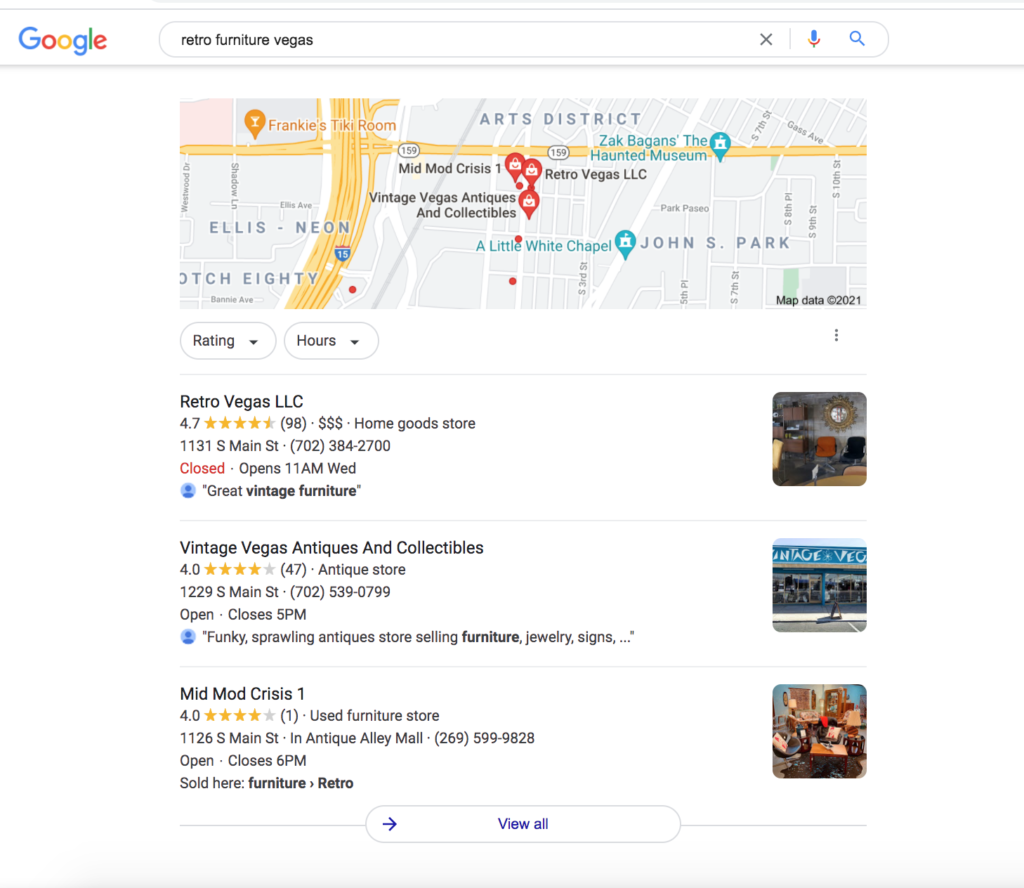
Small business owners can include key information about their business in their GMB listing. Their GMB listing can also show up in a comprehensive panel when potential customers search for a small business by name. It can showcase reviews , products, or Q&As to help your small business look more attractive to anyone who discovers you in the search engine results pages.
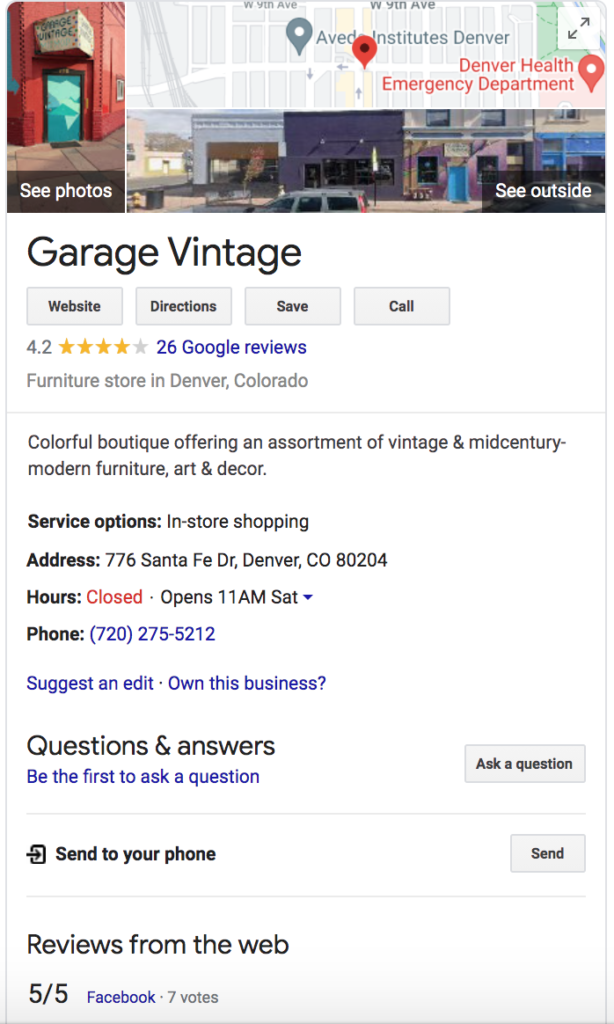
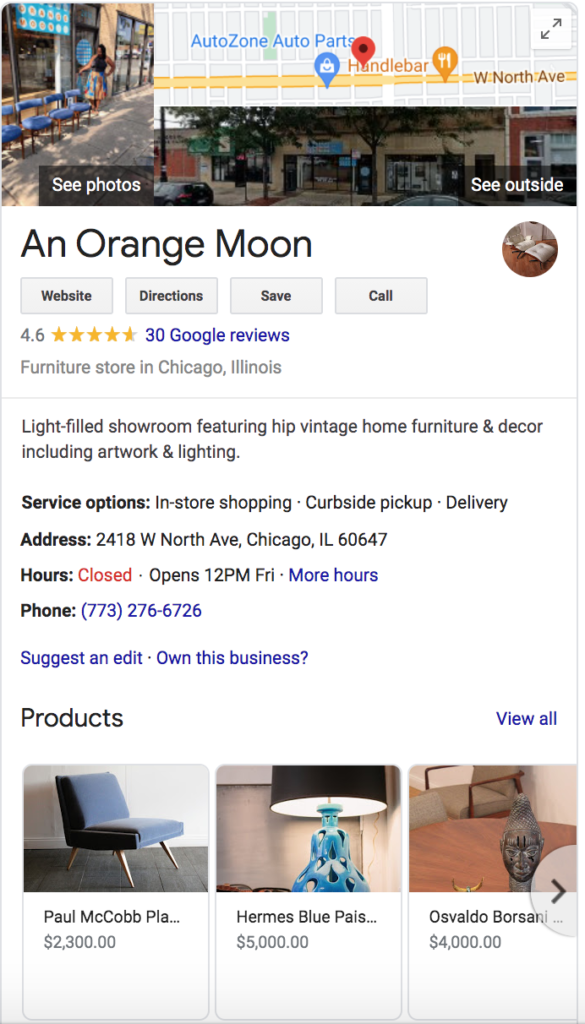
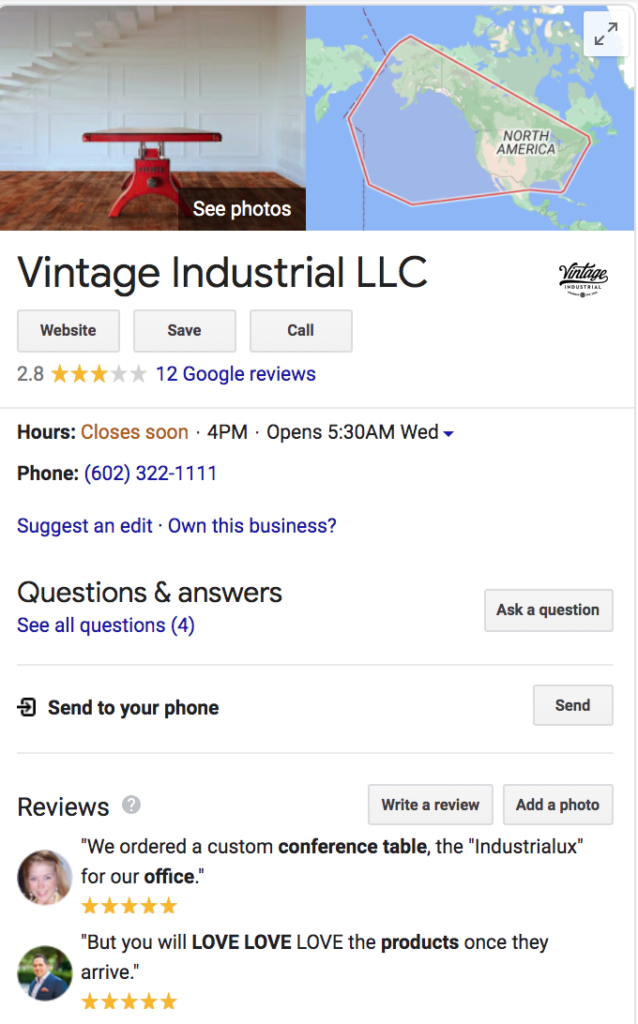
As a small business, being promoted within the local listings is the goal, which is why local search is valuable. You’ll be included with different businesses of all sizes within this map pack, but when you incorporate local keywords to your website and really focus on local SEO best practices, you’ll have an effective way of standing out among your competition.
So why not take advantage of this free optimization that can lead to great SEO success and more credibility for your small business?
4. Use Online Review Websites to Boost your Small Business SEO
There’s more than just one way of finding your website online. Third-party review websites like Yelp can make or break your business.

As a general rule, consumers are incredibly reliant on online reviews and will search high and low through the web to find more information on your business. So with this in mind, it’s a great idea to use review websites to your advantage. You’ll want to create a business profile on as many websites as you can, and not only keep them updated but interact with your customers there!
Positive reviews and testimonials can be incredibly beneficial in letting potential clients know that there is a face to your small business behind the screen. In a sea full of local directories and plenty of businesses to choose from, your online reviews can be a make or break between converting a new customer or turning one away.
Make Sure to Respond to Online Reviews of your Small Business
So we recommend taking time on a weekly basis to comb through all of your local reviews and respond back to both negative and positive ones with a genuine response.
Notice how this small business owner responds to a reviewer who had both positive and negative feedback on their local business’s services.
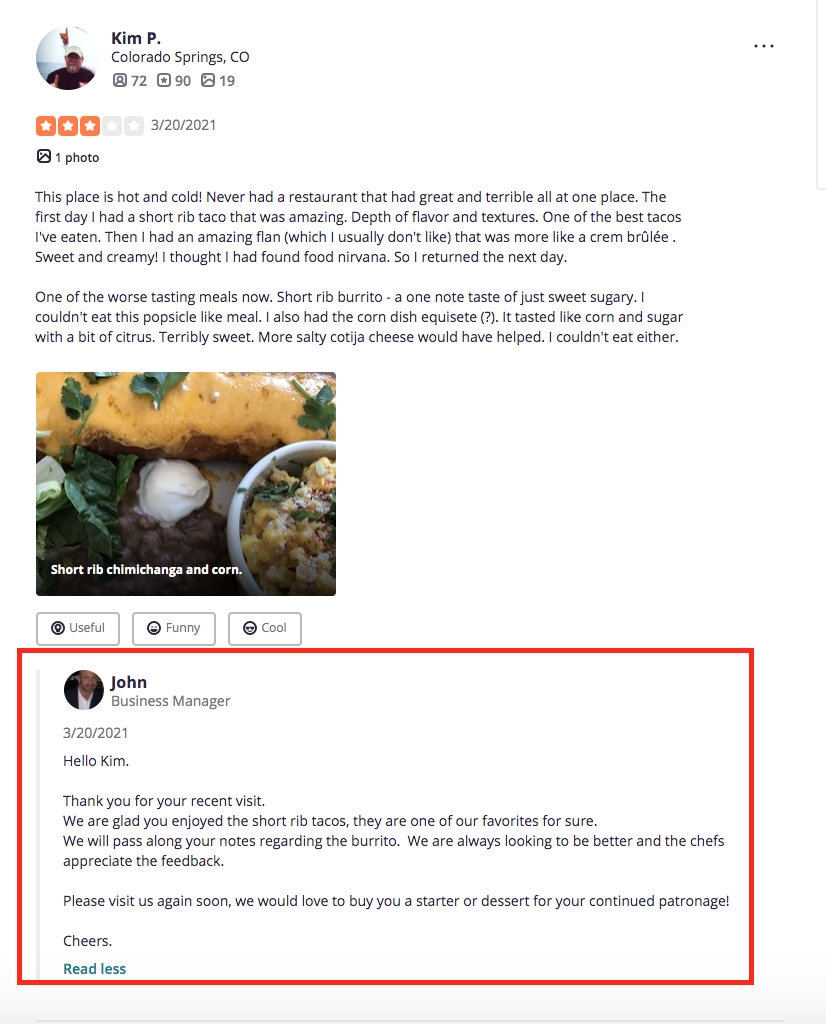
Even if there is a consumer with a bad experience, you have the ability to change their view of your small business by offering to make what went wrong, right. Potential customers will be able to see this as well, which can work wonders for your brand awareness and website conversion rate.
5. Conduct Keyword Research to Identify Gaps in Your Small Business Niche

Keywords are not only the backbone of your Small Business SEO strategy, but when you use them properly on your website, you have a better chance of appearing on the first page of Google.
When Google crawlers discover your website, they look for relevant keywords that explain the purpose of the webpage and make it easy to figure out which industry you are in. This is why it is important to use a variety of keywords in all of your valuable content. This includes geo-tagged, local seo keywords, long-tail keywords and phrases, subtopics, and related topics.
But, as with many other white hat online marketing techniques, keyword research can feel like a large hurdle to get over. This is especially true if you are a small business just starting out.
So we recommend starting small and focusing on smaller, quicker wins. Sometimes, if you have a larger and more established competitor, it can be hard to rank for the same keywords as them. But as you build your site authority, this will become more doable in time.
Keyword research should be an ongoing, long-term strategy. Keyword rankings change often, so make sure to stay on top of how your keywords are performing on a monthly basis.
6. Dive Into the Technical SEO Waters

Your website design may look good on the surface, with carefully selected pictures, colors, and fonts. However, your website’s aesthetics do not always correlate to having a website that looks appealing to Google crawlers on the backend.
Potential customers love seeing bold graphics and fun designs. But these features won’t mean anything if the website doesn’t show up within a Google search! In order for a search engine to promote a web page in the SERPs, the website has to be technically sound. This is why it is incredibly important to invest in your technical SEO efforts.
Common Technical SEO Issues for Small Business Websites
Here are some of the more common technical SEO issues that you should focus your efforts on avoiding.
- Coding errors, such as a forgotten closer tag.
- Broken links, meaning when you click on a link, the link results in an error.
- Slow site speed, which can be caused by a variety of different functionality issues like large images or too much text on a page.
- HTTPS status codes, a security function that allows users to have access to your page.
- Robots.txt files, which are used to index, or store, your pages on the search engine.
- Canonical link elements, to help eliminate duplicate content
- Keyword cannibalization, which is when you overuse a specific keyword to the point where a search engine can view its usage as spammy.
Think of your website’s functionality as the foundation to a strong working website. Without a steady foundation, your website will not be able to work to its full potential. Technical SEO is the bridge between a website that gets visitors and a website that can convert those visitors into customers.
7. Build Backlinks With Other Small Businesses
Link building is the process of optimizing both internal links within your website and external links coming and going from your website. Links are seen by search engines as a vote of confidence in your website. If another company is willing to put a link to your website on theirs, that is a symbol of trust.
Building up your backlink profile is one of the easiest ways to ensure your website shows up on the first page of search results. While link building may seem like a daunting prospect involving a lot of hard work, it doesn’t have to be! You don’t have to be a website owner with a huge online presence to run a successful link building campaign.
The first thing you’ll want to do is reach out to your local contacts. See if you can where you both put external links to the other’s websites on your page. Only reach out to website’s that have relevance to yours. Also, make sure they include the link on your page through an original piece of content.

Utilizing your existing small company contacts is a great way to get good results without spending too much time and money on your marketing efforts.
After you have built up some local authority, you’ll have a good starting point to start reaching out to other social media accounts, bloggers, and higher ranking websites. However, it is important to know that not all links are created equally. It’s better to get one link from a quality website than multiple links from spammy, low-quality websites.
8. Create a Mobile-Friendly Small Business Website
Consider this, mobile phones are the dominant platform for online shopping, with 48% of buyers using a mobile device to complete a purchase. Internet users are a vast and varied demographic, so in order to capture as much web traffic as possible, you’ll want to ensure your website is mobile-friendly.

Think of a mobile phone being a SEO tool to use to your advantage. Also, consider the amount of potential consumers that may never get to your website if the website’s usability is only available on a desktop computer. User experience is everything when it comes to capturing your ideal customers and is a simple way to guarantee your website is accessible to all.
9. Set up Google Search Console and GSC Insights
Your SEO techniques won’t mean anything unless you have the ability to track your hard work. The best way to do so is by setting up your Google Search Console account and your LinkGraph GSC Insights dashboard. Google Search Console is a free platform, and GSC Insights offers limited versions of the platform that allow you to track your SEO performance.
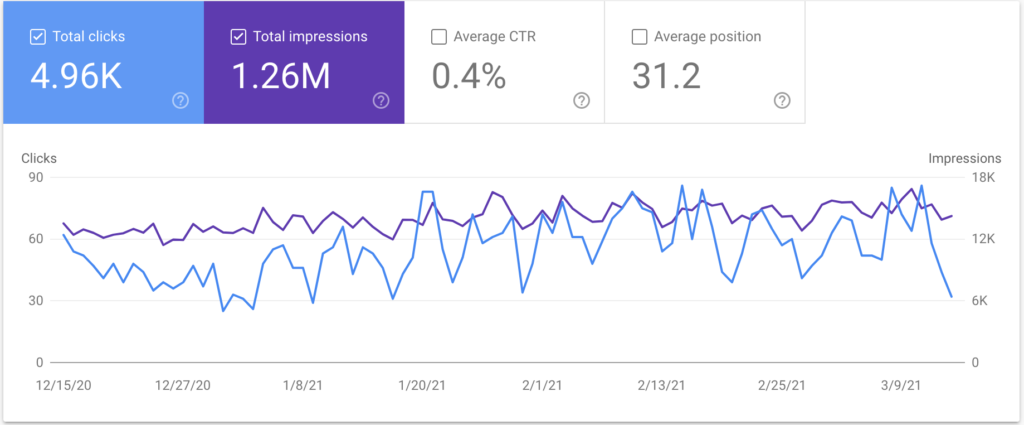
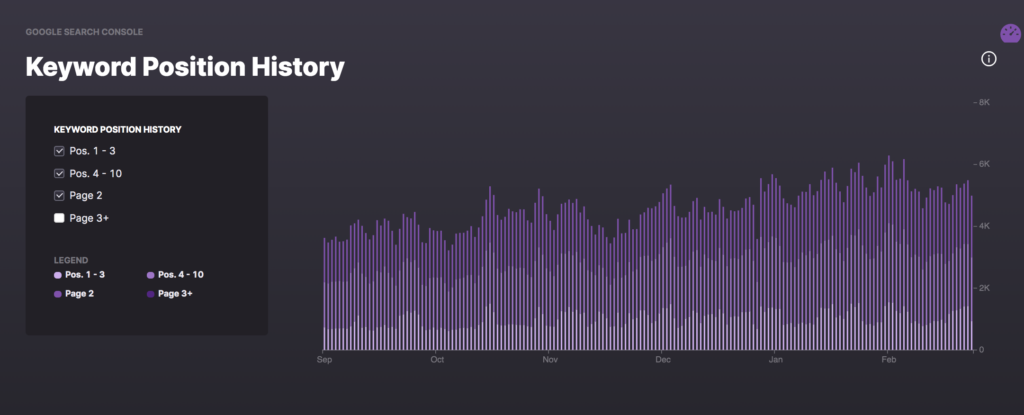
Google Search Console shows you how your website is presented within the organic search results. This platform allows you to fix any crawl errors. You can also submit your sitemap and specific pages for indexing, and see which web pages are ranking highest in the SERPs.
GSC Insights gives you in-depth insights into your keyword rankings, impressions, and organic traffic that can help you iterate on your small business SEO strategy. All you have to do is link your Google Search Console account and you will have access to new insights and advanced data analysis.
10. Do Some Competitive Research
Do you have some really strong competitors in your local area?

One of the best SEO tips is to do some competitive research and look at your competitor’s websites to see what they’re doing well, and use that to inspire your SEO process.
Take everything in, including the content promoted on their social platforms, if they use paid ads like Facebook ads and Google ads. See whether their content marketing team uses influencers, guest posting, local listings, and what keyword rankings they earn.
It’s always good to look at their internal linking structure and how their business information is displayed in the NAP results for Google My Business. Also see how their brand visibility is promoted in search results, social media pages, and other local listing pages. Write all the information you find out into a competitive analysis finding, and then you’ll be in a great place to start building your own customized local SEO strategy.
You don’t have to feel alone when implementing your small business SEO strategy. LinkGraph is here to help. Schedule a free consultation to learn more about how we can accelerate growth and visibility for your small business.
Our team of SEO consultants offers many SEO services for small businesses that will help you get your website to a rank higher in Google. It is our goal to make your local business’s online visibility and organic results grow exponentially online, so trust in our team of experts to get you there.













































































